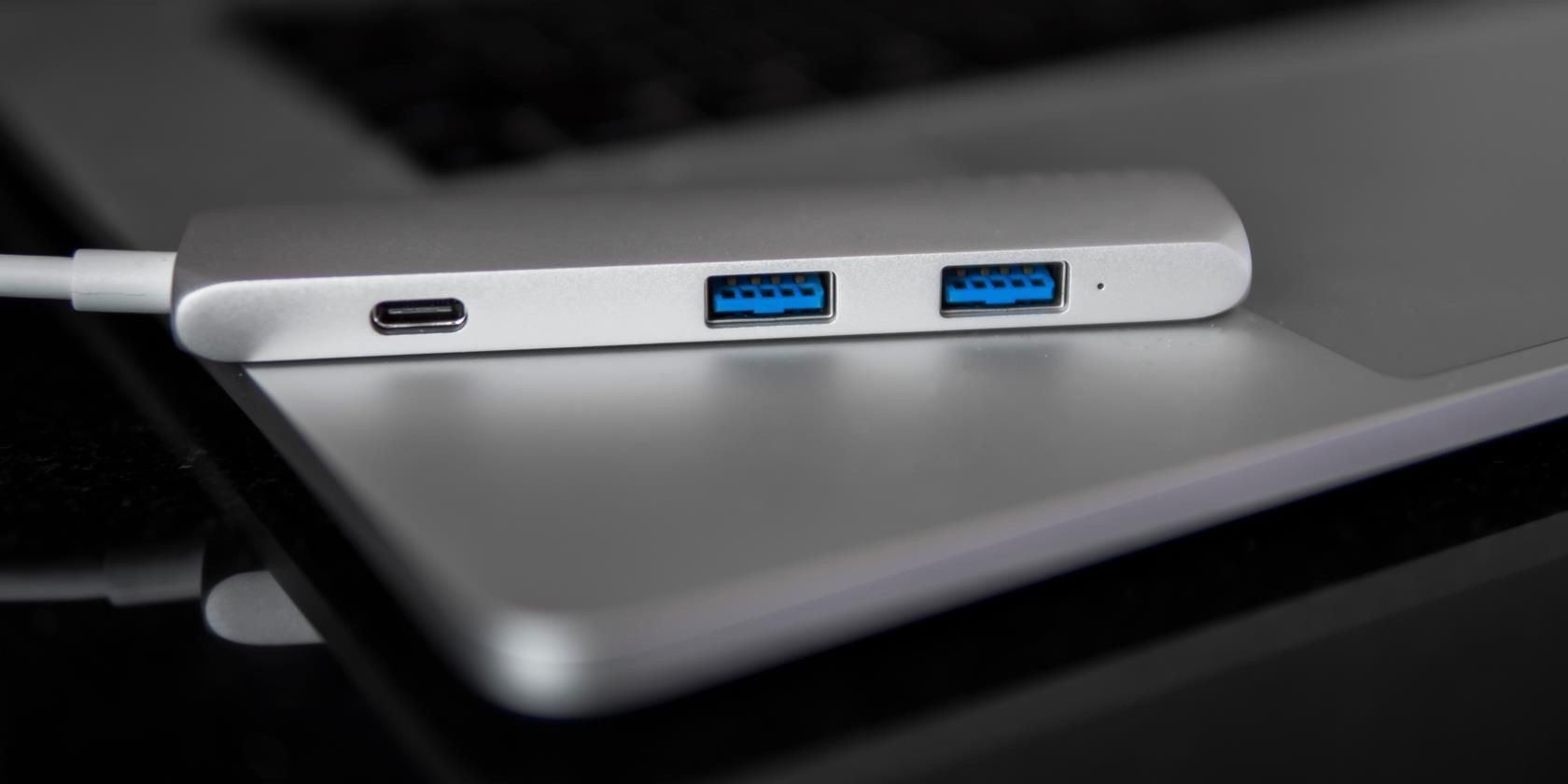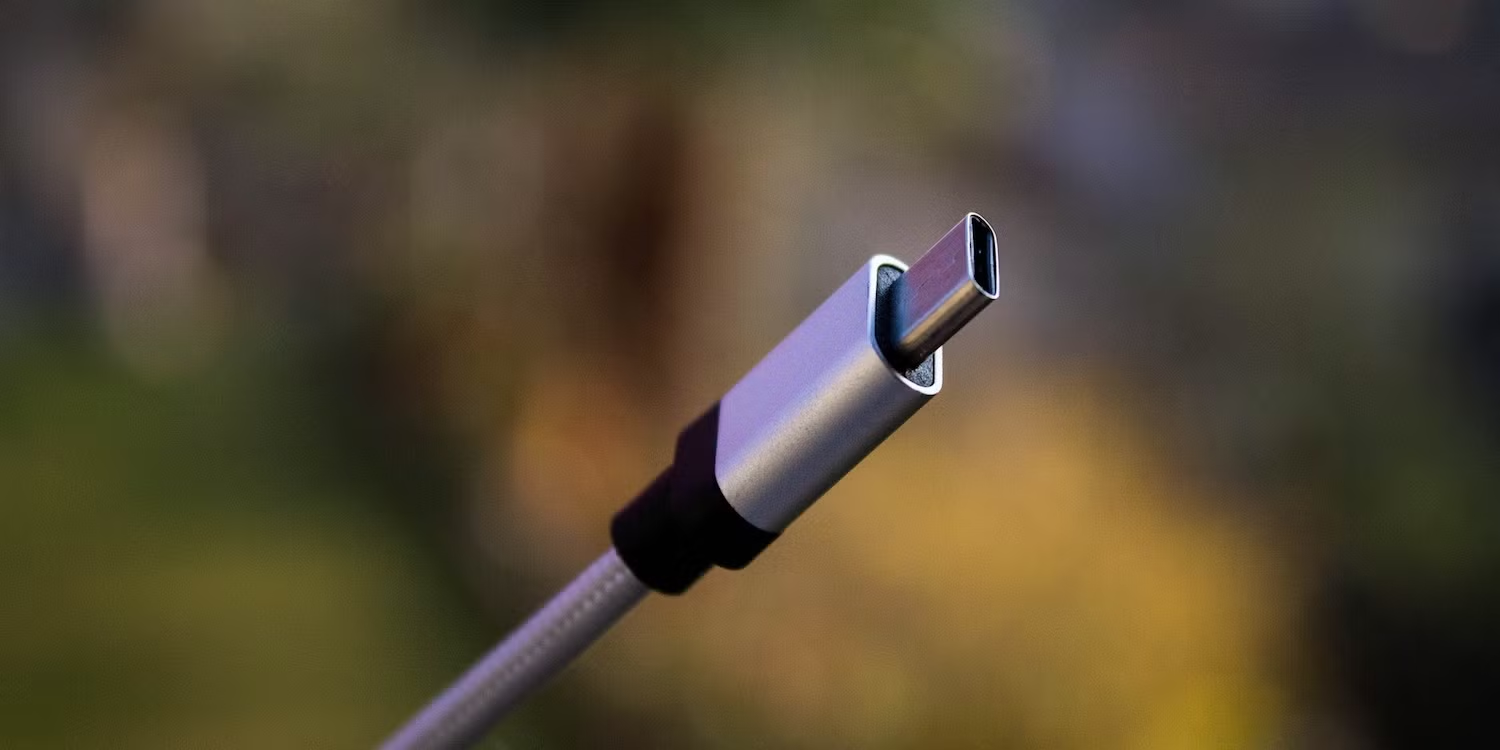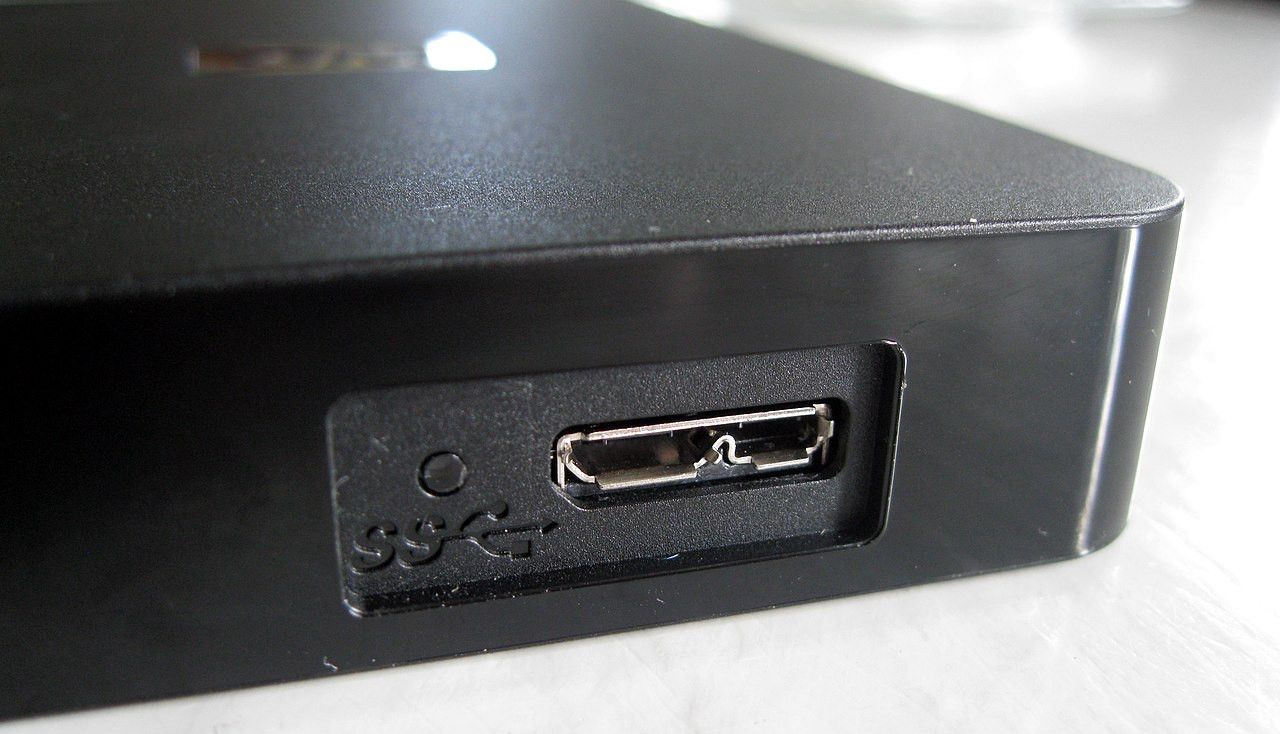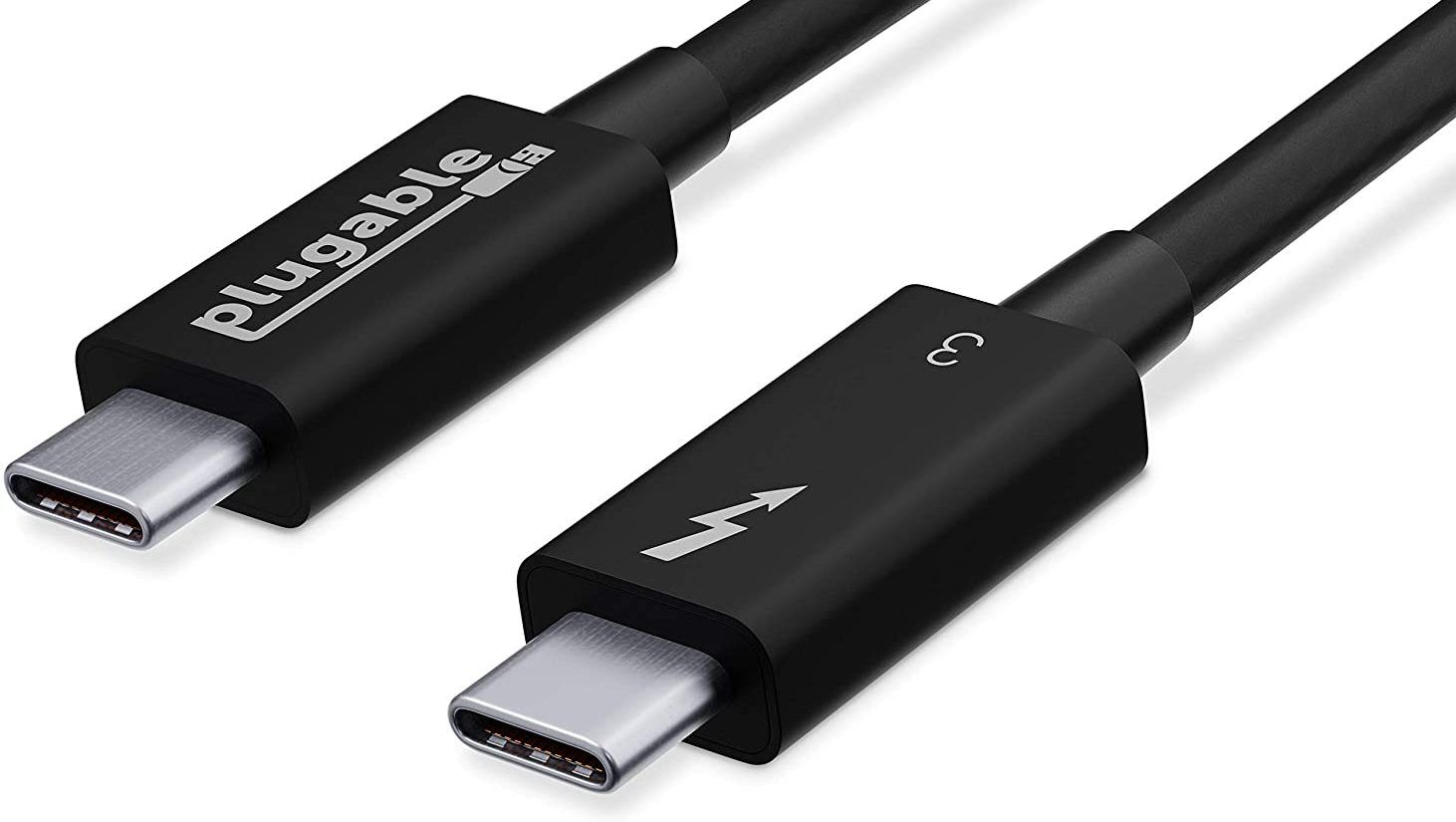The "U" in "USB" standards for "universal," but you'd never know this by the number of standards surrounding it. It's easy to confuse various USB cables, chargers, and speed standards—making it anything but universal.
Let's take a look at two often-confused terms in particular: USB-C and USB 3. We'll compare these so you understand the differences and how they work together.
The Main Difference Between USB-C and USB 3
The primary distinction between USB-C and USB 3 is that one is a type of USB connector, while the other is a speed standard for USB cables in general.
USB-C refers to a type of physical connection on modern devices. It's a thin, elongated oval-shaped connecter that is reversible. Many devices use it instead of older USB-A connectors or micro-USB ports.
Conversely, USB 3 is a standard for USB devices. It dictates how fast you can transfer data over a USB cable, compared to older and newer standards.
Let's dive a little more into each of these to help you better understand how they work together.
Understanding USB-C
USB-C started to roll out in 2014 and has become increasingly common since then. You'll see it on many devices, including modern Android smartphones, headphones, power banks, and controllers for the PlayStation 5, Xbox Series X|S, and Nintendo Switch. On these smaller mobile devices, it's largely replaced the older micro-USB connection.
At some point in the future, USB-C is poised to replace USB-A connectors, which are the common rectangle-shaped plugs on most USB devices like flash drives and mice. Apple's modern MacBook models lack USB-A ports; some desktops and laptops have at least one USB-C port, too.
Aside from the convenience of reversible plugs, the biggest advantage of USB-C is that it can do more than just act as a basic cable for connecting devices. USB-C has the option to handle video output, allowing you to connect a monitor to your laptop, for example.
USB-C cables are also capable of charging a laptop, as opposed to using a proprietary power cable. Thanks to USB Power Delivery, USB-C can also charge your devices faster than other cables can.
USB-C is great, but it can become confusing. This is because it's not always clear which functions a particular USB-C device (or cable) supports, as we'll see. We've also covered more on USB-C if you're interested in more info.
Understanding USB 3
USB 3, sometimes called USB 3.0 or USB 3.x, is a standard that tells you how fast a USB cable can transfer data. Not all USB-C cables support USB 3, and not all USB 3 cables use the USB-C connector.
The prior standard, USB 2.0, is capable of transferring around 60MB/second. USB 3.0, meanwhile, can go up to 625MB/second. Most USB 3.0 connectors, especially USB-A, are marked with a blue plug or connector; they may also have an "SS" (SuperSpeed) icon next to them.
For micro-USB connections, you'll know a plug is USB 3.0 if it has an additional connector attached to the standard one. This is common on external hard drives that don't use USB-C.
USB 3's Confusing Revisions
Adding to the confusion, the USB 3 standard has been updated and renamed over time. In 2013, USB 3.1 became the new standard. Cables that transferred at USB 3.0 speeds were then renamed to USB 3.1 Gen 1, while newer cables that used the faster standard were called USB 3.1 Gen 2.
USB 3.1 Gen 2 can transfer around 1.25GB/second.
Then in 2017, USB 3.2 arrived, adding its own Gen 1 and Gen 2 variants to the mix. USB 3.2 Gen 1 is the same as USB 3.1 Gen 1, meaning that the old USB 3.0 standard got another rename. USB 3.2 Gen 2, meanwhile, was the new name for USB 3.1 Gen 2 and transmits at the same speed.
USB 3.2 Gen 2x2, the fastest USB 3 standard, uses two lanes to transmit at a maximum of 2.5GB/s.
To recap: USB 3.0, USB 3.1 Gen 1, and USB 3.2 Gen 1 are all names for the same standard and thus transmit at the same speed of 625MB/s. USB 3.1 Gen 2 and USB 3.2 Gen 2 are the same and transfer at 1.25GB/s. And USB 3.2 Gen 2x2 is the fastest at 2.5GB/s.
USB 4 was released in 2019 and only works with USB-C connectors. This standard is not widely available yet; some of Apple's Macs released since 2020 include it, but it's not a standard on most other devices. See our comparison of USB 4 and Thunderbolt 4 for more info.
Because of these overlapping terms that are easy to confuse, it's important to check the specific details on a cable (or device) before you buy it. Marketers like to use general terms like "USB 3.2" without specifying the generation, so make sure you know what you're actually getting.
These standards are all backward-compatible, so if you plug a USB 3.2 Gen 2x2 cable into a USB 3.0 slot, it will work fine. You'll just be limited to the slowest speed supported by either device or the cable. And keep in mind that these transfer rates are all theoretical maximums; the real-world speeds probably won't reach those heights.
What About Thunderbolt?
While we're discussing USB standards, it's important to also mention Thunderbolt. This is an interface developed by Intel and Apple that allows for much faster connections when transferring data.
Starting with the Thunderbolt 3 standard, this now uses the USB-C connector. Thunderbolt 3 is capable of transfer speeds up to 5GB/second. However, like the USB 3 standard, not all USB-C cables and ports support Thunderbolt 3 or 4. For example, the discontinued 12-inch MacBook had a USB-C port that wasn't Thunderbolt-equipped. We've gone into more detail on how Thunderbolt and USB-C compare.
Thunderbolt cables are usually "active" connections, meaning they have circuitry inside to enable faster performance. If you have a compatible device (such as a modern MacBook), then it's worth looking at Thunderbolt-compatible accessories for the best performance.
Thunderbolt-equipped cables typically feature the Thunderbolt icon to differentiate them from standard USB-C cables. Just keep in mind that they're more expensive than normal USB 3 cables.
USB-C and USB 3 Aren't Perfect
We've looked at the basics so you understand what USB-C and USB 3 offer. It should be clear now that USB 3 and USB C are not the same, though this standard and connector type often work in harmony.
As you've probably noted, these standards are nowhere close to perfect. Aside from the naming confusion with USB 3, there are other usability issues affecting everyday users.
One major problem is the amount of variance in USB-C devices. For example, your phone might offer USB-C fast charging, but only with the cable that came in the box. If you buy a third-party cable (even a high-quality one), it may prevent you from taking advantage of the feature. Buying the best USB-C cables comes at a premium.
Not every USB-C port will work with all the possible features of USB-C, either. For instance, your laptop might have two USB-C ports, where one only works for charging and the other is good for connecting an external display. This can be confusing and limiting. Plus, having to buy adapters to get the rest of this functionality back is a pain, since it's an additional expense.
There are also historical problems with USB-C. Since the cable pulls more power than older connections, when USB-C was first in adoption, low-quality cables could fry your devices. This thankfully isn't as much of an issue today, but you should still stay away from no-name USB-C cables if they haven't been properly tested and approved.
USB-C and USB 3: Cleared Up
In the future, USB-C should continue to become more popular, but we won't see USB-A connections disappear for some time. The USB 3 standard has changed over time and picked up new confusing names; hopefully, USB 4 simplifies this.
Using this information, you know now what to look for when you buy a cable or device that offers USB-C and/or USB 3. But these aren't the only important types of computer cables to know.




